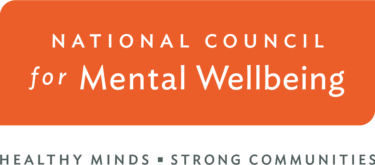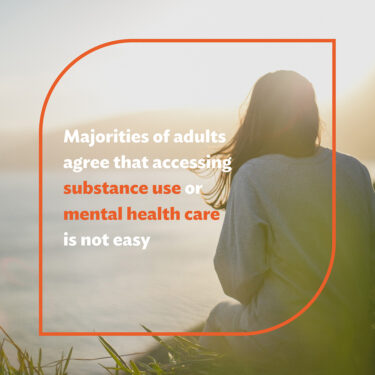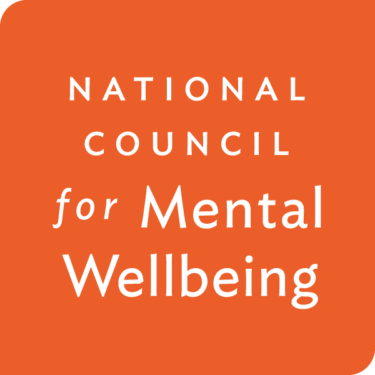Mass Violence in the United States: Definition, Prevalence, Causes, Impacts and Solutions

A Call to Action
Mass violence is a serious and growing public health concern in the U.S. Events of mass violence are so terrifying and traumatic that communities demand an immediate explanation. After such tragedies, community leaders, politicians and media may invoke mental illness as the reason for mass violence, a narrative that resonates with the widespread public belief that people with mental illness pose a danger to others.
Most mass violence perpetrators do not have a major psychiatric disorder and the overwhelming majority of people with diagnosable mental illnesses are not violent toward others.
Lumping all mental illness together, and then assuming that acts that seem incomprehensible to the average person are due to mental illness, results in millions of harmless, nonviolent people recovering from treatable mental health conditions being subjected to stigma, rejection, discrimination and even unwarranted legal restrictions and social control.
This report from the National Council Medical Director Institute includes an overview of mass violence in the U.S. and provides a broad range of recommendations that can help prevent mass violence incidents and better support people who are struggling.
“What’s happening in our society is not a mental illness, it’s a social illness. Hate and anger are not mental illnesses.”
Joe Parks, Medical Director, National Council for Mental Wellbeing
Recommendations for Preventing Mass Violence
Community solutions should involve all stakeholders, including community members, law enforcement, behavioral health care providers, the courts and faith-based organizations. Mass violence is a community-wide problem that cannot be solved by any one organization or system alone. Learn more about our key recommendations for each of the stakeholder groups below to better address mass violence.
General Recommendations
- Instead of focusing only on quick fixes downstream from the sources of the problem, we should identify root causes of mass gun violence and develop strategies to alleviate them.
- We cannot predict which people will commit a violent act, but we can prevent violence by reducing risk. This is a public health approach that should be emphasized in violence prevention. Prevention does not require prediction.
- Although most people who commit acts of mass violence do not have diagnosable mental illnesses according to conventional criteria, they may have mental health difficulties, personal crises or interpersonal conflicts that could respond to mental health services and psychosocial interventions.
- Mental health providers and advocacy groups should acknowledge the role mental illness can play in some cases of mass violence and support efforts to prevent the subset of mass violence perpetrated by people with mental illness.
Health Care Organizations
- Establish multidisciplinary behavioral threat assessment and management (BTAM) teams that include representatives from behavioral health, security and law enforcement, human resources and legal services.
- Implement ongoing quality improvement of violence risk assessment and behavioral threat assessment and management (BTAM).
- Train staff in lethal means reduction, a rational strategy for reducing lethal violence, which is very helpful in combating suicide.
- Prepare staff for vicarious trauma and compassion fatigue. Provide resources for self-care and support for staff needs.
Schools
- Reconsider and revise zero tolerance policies and their resultant suspensions and expulsions, as these are ineffective and harmful practices. Rely instead on more effective disciplinary measures, student support services and well-trained, multidisciplinary behavioral threat assessment and management (BTAM) teams.
- Avoid measures that create a correctional facility-like atmosphere, such as bulletproof glass, armed security guards and metal detectors.
- Refrain from high-stress security drills. Realistic enactments by law enforcement should not involve students or school staff. Prohibit the use of deception in drills (i.e., where children or staff are led to believe that the drill is an actual crisis event), and avoid involving children in high-intensity active shooter drills (e.g., using real weapons, gunfire or blanks; theatrical makeup to give a realistic image of blood or gunshot wounds; predatory and aggressive acting by the person posing as the shooter) — both can be traumatizing. Use security drills that can be practiced without undue stress (e.g., lock doors, turn off lights, move out of sight, remain silent).
- Establish an emotionally connected safe-school climate where each student can feel comfortable bringing matters of concern to a responsible adult.
- Emphasize and train staff in interpersonally based and emotionally supportive prevention measures that include the impact of trauma and indications for referral for mental health treatment, such as Youth Mental Health First Aid, bereavement support and academic accommodations.
- Implement universal emotional literacy and social skills training and anti-bullying programs and add mental health to the school health curriculum.
Communities
- Create and support broad community partnerships that include behavioral health, law enforcement, schools, faith and medical communities, etc., to strengthen the connections among those systems that interact with people who have mental illnesses and substance use disorders and may be at risk for committing violence.
- Prioritize as high risk those people with narcissistic and/or paranoid personality traits, who are fixated on thoughts and feelings of injustice and grievance, and who have few social relationships and recent stresses, as well as those with a psychosis characterized by persecutory delusions and/or homicidal command hallucinations.
- The 988 Suicide & Crisis Lifeline and other crisis call centers should include harm to others (HTO) assessment portions in their risk assessment sections, separate from harm to self (HTS). Crisis staff should be trained in HTO assessment. The HTO has some similarities to the risk rating of HTS, using categories of desire, intent and capability to guide the risk rating, plus or minus modifying factors. There are also similarities in interventions with HTO and HTS.
- Establish behavioral threat assessment and management (BTAM) teams. These multidisciplinary, collaborative teams should include representatives from mental health, law enforcement and security, human resources and legal services.
- Provide training in Mental Health First Aid (MHFA), which teaches skills to respond to the signs and symptoms of mental health and substance use challenges.
Judicial, Correctional and Law Enforcement Institutions
- Develop a basic educational toolkit for judges, covering risk assessment, the role of trauma and the need for additional supports for people who may pose risks for violence.
- Involve mental health professionals in threat assessments conducted by law enforcement and in implementation of extreme risk protection orders (ERPOs).
- Provide training in MHFA for Corrections Professionals and MHFA for Public Safety.
Legislators and Government Agencies
- Fully implement and enforce the existing federal background check requirement for firearms purchases from gun dealers. Fully enforce state laws requiring background checks, where present.
- Use the Bipartisan Safer Communities Act, which began funding programs in February 2023, to increase the availability of threat assessment training at the local, state, tribal and national levels.
- Establish sustainable funding streams for developing behavioral threat assessment and management (BTAM) strategies and programs.
- Promote expansion of the Certified Community Behavioral Health Clinic (CCBHC) model. These clinics are required to provide extensive crisis response, and the CCBHC prospective payment system model can support the development and operation of threat assessment teams.
- Enact state ERPOs that allow the temporary removal of guns from people who are known to pose a high risk of harming others or themselves in the near future.
- Support expanding federal funding for research on gun-related deaths and injuries (which was essentially eradicated in 1996 by the Dickey Amendment but revived in 2019, though still significantly limited — e.g., $25 million in 2019).
Research
- Support a unified standard definition of mass violence.
- Support research on the nature of and contributors to mass violence, including neurobiological, psychological and sociological factors.
- Support research on methods and instruments for identifying and intervening with people at risk of carrying out acts of mass violence.
- Create a multiagency team, including the Department of Justice and the Department of Homeland Security, to conduct a standardized, mandatory investigation/analysis of each mass violence event.
- Evaluate ERPOs in states that have enacted them, to assess both the process of implementation and their effectiveness.
Working with the Media
- Build close working relationships with media representatives ahead of any crisis.
- Train behavioral health staff who will respond to the media. Develop protocols about who should respond to what type of request and what they should say. Develop these messages well in advance of a crisis.
- Talk about the role of treatment in helping people at risk of violence. Highlight the fact that most people with mental illnesses will never become violent and are much more likely to be victims of violence. Speak to the impact of untreated or undertreated mental illness in combination with other risk factors.
- Work with the media to develop guidance for the public on risk factors for violence. Help the public understand the importance of “see something, say something,” and encourage public training in MHFA.
Learn More
For additional resources and support following a mass violence event, please see:
- How to Talk to Children About Mass Shootings — American Academy of Child and Adolescent
- Disaster Technical Assistance Center — Substance Abuse and Mental Health Services Administration
- National Child Traumatic Stress Network
- Coalition to Support Grieving Students
- National Center for School Crisis and Bereavement
- National Mass Violence and Victimization Resource Center


